The importance of memory in severe mental illness
While we all sometimes forget where we put our phone or keys, memory problems can have much more serious consequences. Together with his collaborators, Professor Jack Mellor from the University of Bristol, UK, is investigating how impairments in a person’s ability to form memories can contribute to the symptoms of psychiatric disorders. If they can uncover the biological mechanisms behind conditions such as schizophrenia, they hope to open new opportunities for mental health treatments.
Talk like a neuroscientist
Cognitive — related to cognition, the mental process of acquiring, evaluating and/or using knowledge
Electrophysiology — the study of the electrical properties of cells
Encode — to create a memory
Neuron — a nerve cell
Neuroscience — the study of the brain and nervous system
Optogenetics — a genetic modification technique that causes an organism to express light-sensitive proteins
Psychiatric disorder — a mental health condition that significantly affects a person’s emotions, behaviour or mental state
Schizophrenia — a severe psychiatric disorder that affects the way a person thinks, acts and perceives reality
Synapse — a junction between neurons
Synaptic plasticity — the ability of neurons to modify the strength of their synaptic connections
Every time you have a new experience, you form new memories. Not only do these allow you to remember the past, but they also help you know how to act in the present and future. “Memories are stored in the brain as internal representations of our past experiences,” explains Professor Jack Mellor from the University of Bristol. “We predict what will happen in the future based on past experiences, so a good memory is the basis for good decision-making.”
An effective memory is, therefore, critical to our behaviour. “If, on a sunny afternoon, you pass an ice cream van on your way home from school, that memory can guide your future actions,” says Jack. “Next day, you can take money with you to buy an ice cream and plan your route home to pass the van again.”
However, for effective decision-making, we must use memories flexibly. We rarely encounter situations that are identical to past experiences, so our brain generalises memories to make predictions. For example, if the ice cream van has moved the next day, you can relocate it by remembering the sound of its jingle and listening for it. “Flexible memory representations allow us to cope with uncertainty,” explains Jack. “If memory becomes inflexible, we are unable to deal with uncertain outcomes.”
People with certain psychiatric disorders may not be able to use their memory to predict the future consequences of their behaviour, causing them to act in illogical ways, leading to disorientation and frustration. This is why Jack is leading a team of neuroscientists from the University of Bristol, Cardiff University and University College London to investigate the mechanisms underlying memory and how they relate to psychiatric disorders.
The neuroscience behind memory
“Neurons are the building blocks of our brain, connected at junctions known as synapses,” says Jack. “If we imagine that each neuron represents a piece of information, to create a memory we must connect all the neurons that hold information associated with that memory – a process known as encoding.”
These synapse connections are formed by the cellular process of synaptic plasticity, which links pieces of information (neurons) into whole experiences (memories). By grouping units of information together, synaptic plasticity enables us to remember events, objects and actions, such as your last birthday, a football and how to form a sentence. “Synaptic plasticity is the fundamental process underlying memory and learning,” explains Jack.
Individuals are not only defined by their genetics, but also by their experiences. Synaptic plasticity wires these experiences into your brain, determining how you respond to future situations. This synaptic plasticity begins at a very early age – the psychological theory of attachment states that the relationship between an infant with their primary caregiver is critical to establishing lifelong behaviour patterns adapted to the emotional environment.
In theory, synaptic plasticity means we are always making memories. In practice, even our hugely complex brains cannot record everything we experience. Therefore, we have mechanisms that select and filter the most important information for storage, even when we are unaware of it. Understanding how synaptic plasticity works is crucial to understanding how we interact with the world around us and why we make the decisions we do.
How do Jack and the team study synaptic plasticity?
Observing synaptic plasticity in action involves sophisticated laboratory techniques. “Neurons communicate by sending electrical signals,” explains Jack. “Electrophysiology methods are the most direct way to measure the electrical properties of neurons. It is difficult to measure large numbers of neurons this way, so we also use tools that convert electrical signals into light signals.” This allows the team to image neuronal activity by shining light into the brain to excite fluorescent molecules. “Using advanced microscopy techniques, we can image deep into the brain tissue with very high resolution, enabling us to measure the activity of many neurons that contribute to memories as they are being encoded,” says Jack.
Reference
https://doi.org/10.33424/FUTURUM464
The team also uses optogenetics, which involves inserting genes into mice that express light-sensitive proteins on their neurons. “When the protein is exposed to light, it will excite the neuron, allowing us to use light to control the mouse’s neuronal activity,” explains Jack. Researchers use this technique to discover the functions of individual neurons by activating or inhibiting them and seeing how the mouse responds. In the field of memory research, optogenetics has been used to demonstrate the concept of ‘inception’ – the implantation of false memories in the brain, popularised by the Christopher Nolan film, Inception. Using light, neuroscientists activate neurons that encode an experience in the mouse’s memory, such as an encounter with another animal. Even though the mouse has never met that other animal, it will believe it has.
How can synaptic plasticity influence psychiatric disorders?
Jack and the team have discovered that genetic mutations that increase the risk of psychiatric disorders in humans cause impaired synaptic plasticity and memory in mice. “Now, we want to know if these mutations also impair synaptic plasticity in humans,” he says. “If so, it would indicate a biological mechanism for the symptoms displayed by people with psychiatric disorders. This would then open new ways to treat them.” For example, many genes are associated with an increased risk of schizophrenia. If these genes are related to a core biological function, such as synaptic plasticity, treatments can be targeted to address this underlying mechanism.
“Most psychiatric disorders share symptoms, meaning a person with one disorder is often also diagnosed with another,” says Shyline Bajaba, a research technician in the team. “This can be traced back to the molecular mechanisms at work, where a disruption to one particular biological process can have a variety of effects.” The team believes that synaptic plasticity is the biological process in question for a range of psychiatric disorders, including schizophrenia.
“We hypothesise that the biological changes observed in people with schizophrenia (such as cognitive impairments) involve synaptic plasticity,” explains Jack. “We think synaptic plasticity alters the way that memories are represented in the brain and, crucially, how they can be adapted to changing environments.” If this is the case, it may explain why people with schizophrenia often struggle to distinguish reality from fantasy. To test this, Jack and the team will use high-resolution imaging to record neuronal activity in mice with genetic mutations associated with schizophrenia. They will measure synaptic plasticity in brain tissues extracted from mice and humans undergoing brain surgery for treatment of neurological conditions.
Once the biological mechanisms behind schizophrenia have been identified, it will become easier to treat the condition. “With a greater understanding of the biological mechanisms that underlie psychiatric disorders, we hope to develop treatments that not only alleviate the symptoms, but target the underlying biological causes,” says Shyline.
 Professor Jack Mellor
Professor Jack Mellor
Professor of Neuroscience, School of Physiology, Pharmacology and Neuroscience, University of Bristol, UK
Field of research: Neuroscience
Research project: Investigating the biological mechanisms underlying memory and how they relate to psychiatric disorders
Funders: UK Research and Innovation (UKRI), Medical Research Council (MRC)
About neuroscience
Neuroscience is the study of the brain and nervous system, and how their development and structure affect our cognition and behaviour. “Neuroscience is about understanding how fundamental scientific principles give rise to human behaviour,” says Jack. “This means it is at the intersection of multiple disciplines, all aiming to describe human existence. For me, this makes it the most interesting field of science.”
How interdisciplinary is the field?
Collaboration is vital within any area of science, and neuroscience is no exception. Advances in the field require input from researchers from a wide range of disciplines, including biology, chemistry, physics, maths, philosophy and engineering. “It’s important to gather the necessary expertise and to approach the challenge from different perspectives,” explains Jack. “Our lab group works with clinical partners, who contribute knowledge about the symptoms and genetics of psychiatric disorders and provide human tissue samples for our experiments. We also have industry partners, who are critical for turning our academic findings into new treatments for patients.”
Why does neuroscience rely on animal experiments?
Animal research is essential for understanding how the human brain functions, and what happens when it goes wrong. “We can’t access the human brain at the level of detail required to understand the activity of individual neurons, and we can’t manipulate human brain circuits to understand the effects of specific neuron activation,” explains Jack. Instead, neuroscientists study neurons in mice and apply their findings to help understand the function of neurons in humans. Experimenting on animals is a contentious ethical issue, and it is strictly controlled by legal frameworks to ensure that any animal suffering is minimised. “Before beginning, every experiment is assessed by independent experts to weigh up the potential benefits to science versus the potential harm caused to the animals involved,” says Jack. “If the balance is negative, the experiment will not be conducted.”
Pathway from school to neuroscience
• Jack advises that science and maths are fundamental subjects to study at school and beyond, but he also recommends cultivating other interests to gain a well-rounded education.
• As it is such an interdisciplinary field, many degrees could lead to a career in neuroscience. Members of Jack’s team have backgrounds in neuroscience, biochemistry, psychology, physics, computer science and philosophy.
Explore careers in neuroscience
• “The most important thing for a career in neuroscience is to be excited about how the brain works!” says Jack. He recommends listening to podcasts such as This Week in Neuroscience (www.microbe.tv/twin) and the Huberman Lab Podcast (www.hubermanlab.com/podcast), reading about neuroscience from popular science authors such as Oliver Sacks (www.oliversacks.com), and watching films that explore aspects of memory such as Inception and Memento.
• The British Neuroscience Association has a career guide for students (www.bna.org.uk/careers) and a wide range of educational resources (www.bna.org.uk/resources).
• Members of the team participate in the Bristol Neuroscience Festival, a biannual event that includes a day of demonstrations, interactive activities and talks aimed at secondary school students: www.bristol.ac.uk/neuroscience/bnf
Meet Jack
When I was younger, I was fascinated by psychology, philosophy and mathematics. I also enjoyed sports and music. As I grew older, I realised my main interest was in human behaviour. The more I thought about it, the more I wanted to find out how to explain it – or, at least, understand it better.
My university education involved the study of chemistry, biochemistry, psychology and physiology. Understanding the brain involves understanding how biology works and having a theoretical appreciation of complex systems – which is why mathematics is important.
There are over 500 trillion synapses in the human brain! This gives us the potential to store lots of information, but computers have now overtaken human brains as the largest storage repository of knowledge. However, human brains can still do many things that computers cannot, even with advanced artificial intelligence.
When I’m not working, I enjoy surfing anywhere with waves and rowing anywhere without waves. I also enjoy being taught by my children, exploring the Scottish Highlands and playing music.
Jack’s top tip
Find your own path. You don’t need to follow in anyone else’s footsteps.
Meet Shyline

I have always been fascinated by criminal behaviour, and in particular how punishment systems, such as prisons, can impact criminals’ mental states. I have worked within the Zimbabwean prison system to support the self-improvement of prisoners, where I have met inmates with various mental health issues, including schizophrenia.
In Zimbabwe’s conservative society, inmates with psychiatric disorders are still shunned and don’t receive the care they need to live functional lives. Working with Jack in this research team allows me to improve my understanding of the biological underpinnings of mental health problems, which will help me support Zimbabwean rehabilitation systems.
Before starting my degree in biochemistry and cell biology in Germany, I spent time studying developmental psychopathology. I explored the early warning signs of psychological illness and investigated the development of Alzheimer’s disease, which taught me about the intricate synaptic makeup of our brains. I also conducted an internship in Mexico, where I studied how environmental factors influenced anxiety and depression in rats.
It’s a common misconception that we only ever use 10% of our brain. In fact, even when we’re sleeping, we’re using a lot more than that!
In my free time, I love crocheting, knitting and jogging. I also enjoy playing netball, reading non-fiction and listening to true crime podcasts.
Shyline’s top tips
1. It’s never too early to begin working towards your dream. If you get it wrong, you can always start over.
2. Seek out good mentors, because supportive supervision is more important for your personal growth than attending a prestigious university.
Do you have a question for Jack?
Write it in the comments box below and Jack will get back to you. (Remember, researchers are very busy people, so you may have to wait a few days.)
Discover how neuroscientists are trying to use optogenetics to cure schizophrenia:
www.futurumcareers.com/can-we-control-the-electrical-activity-in-our-brains

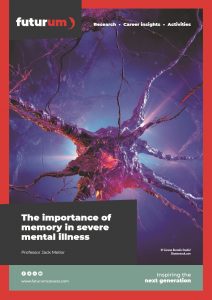

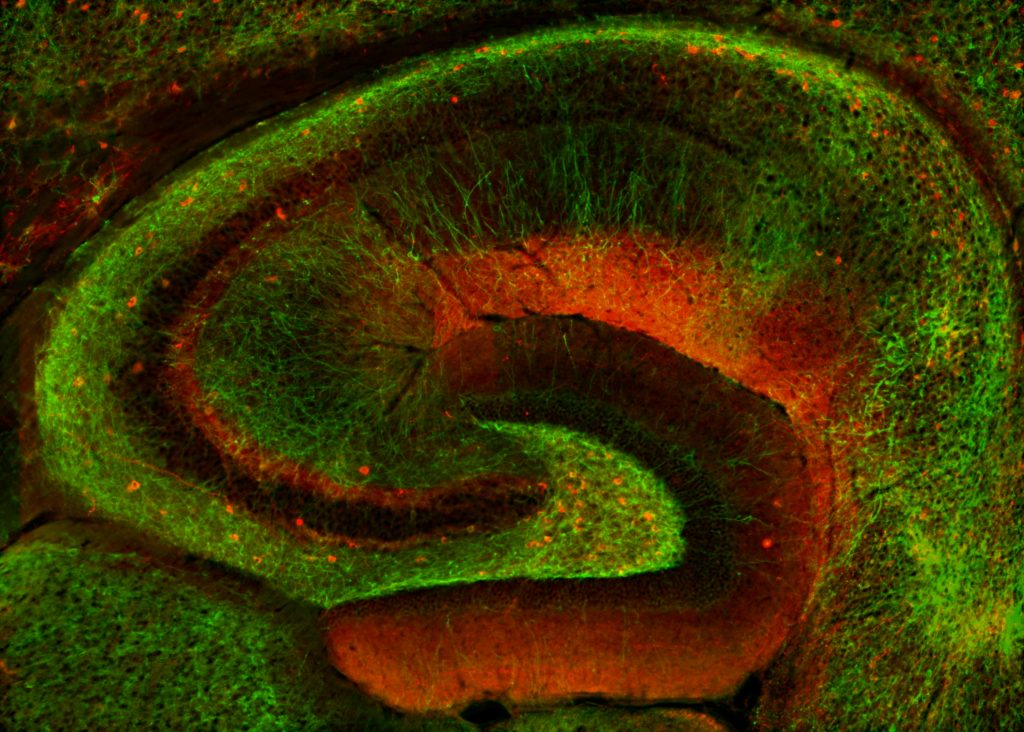
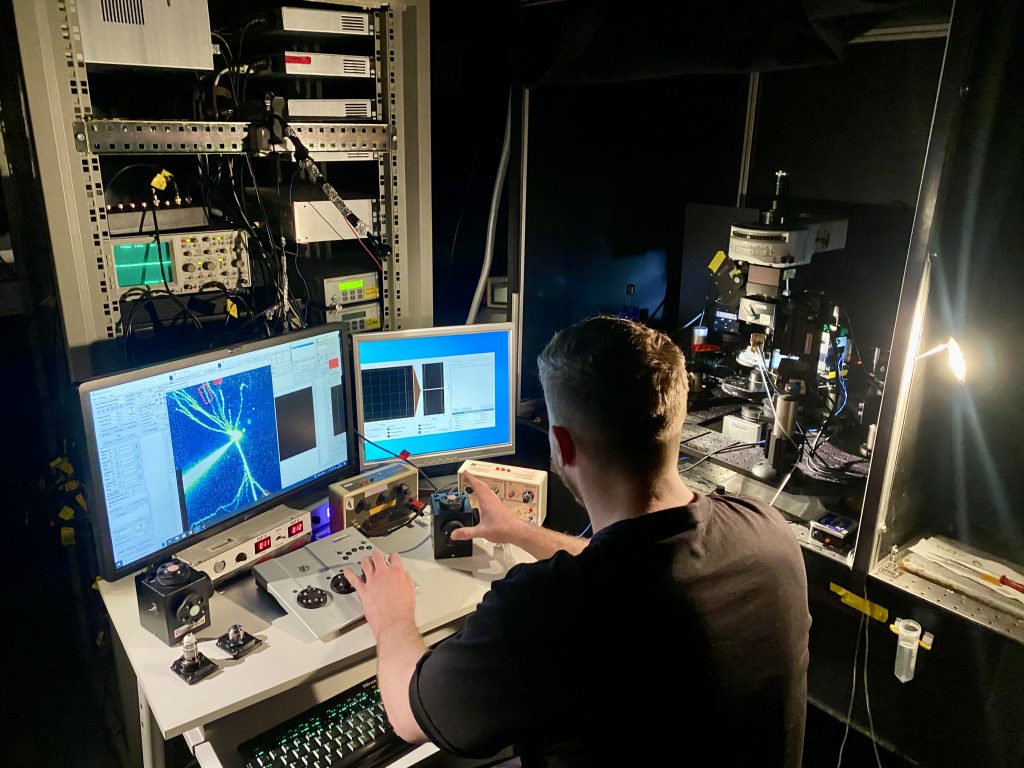

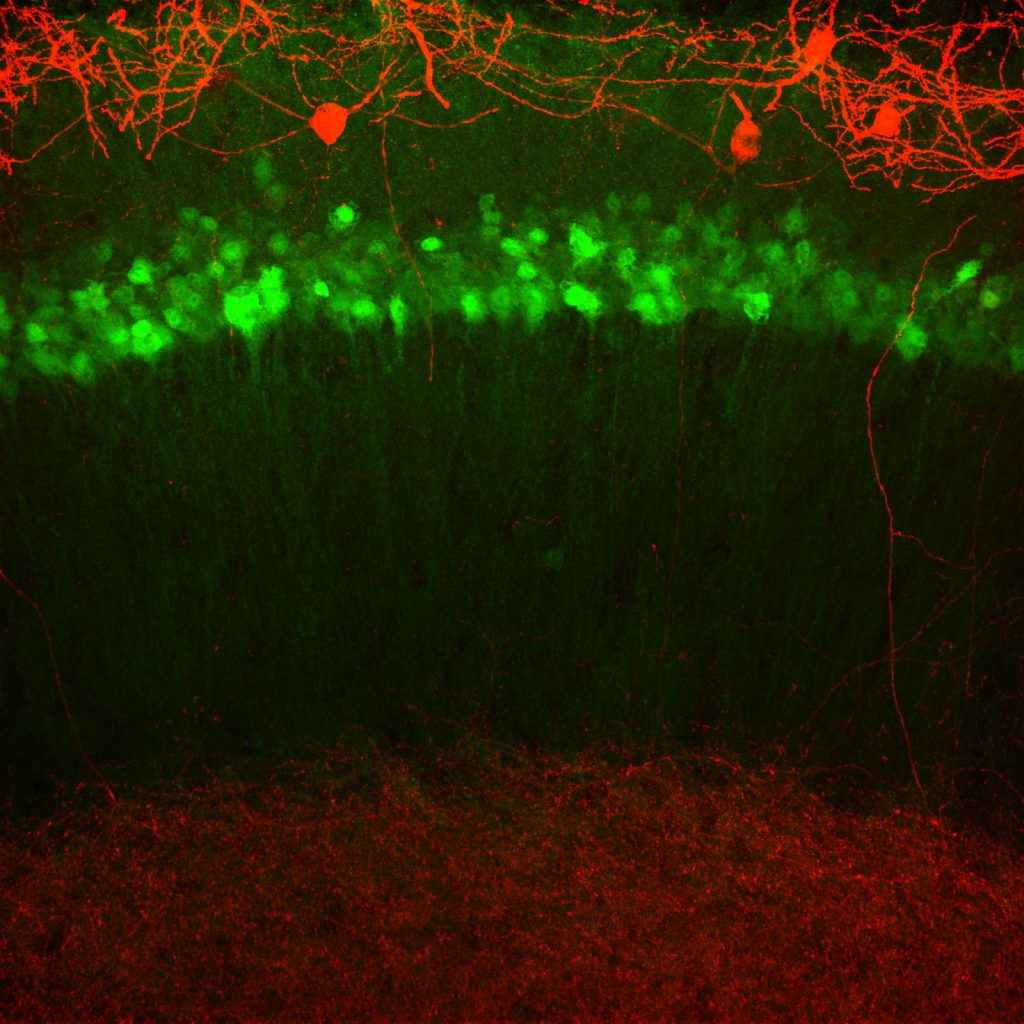
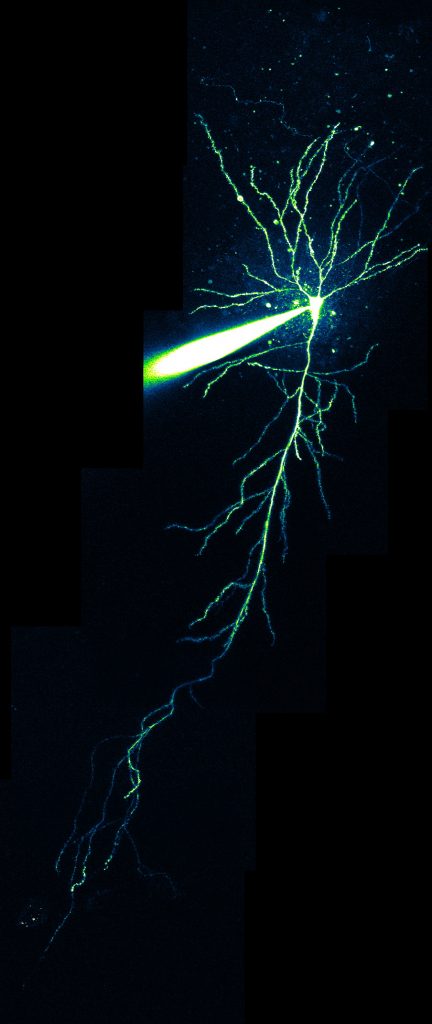
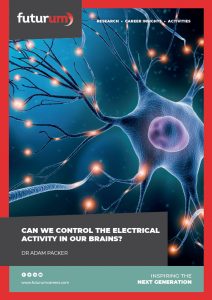
0 Comments